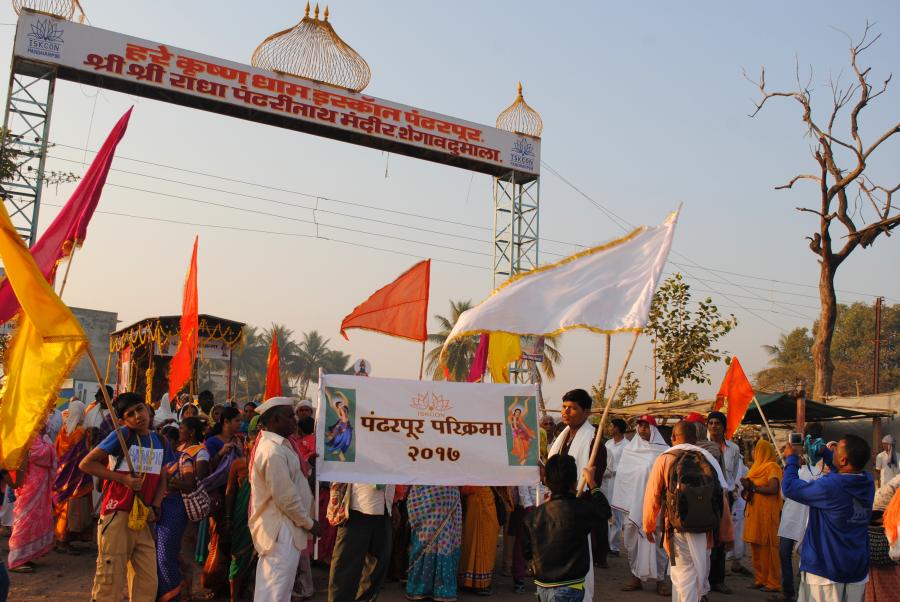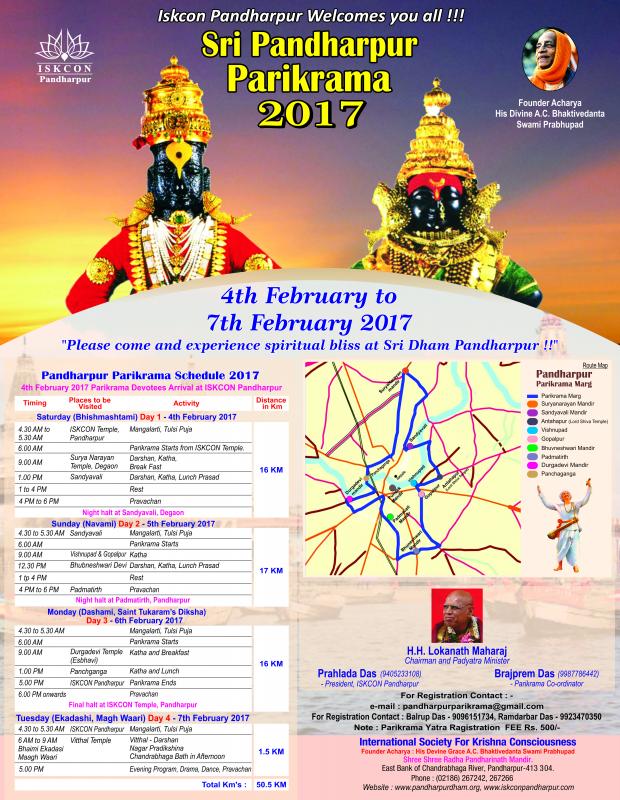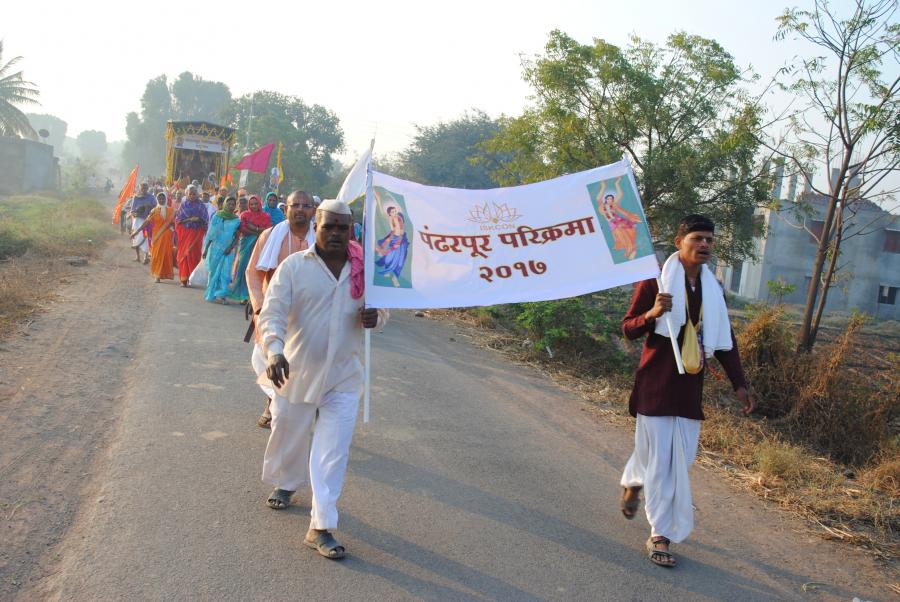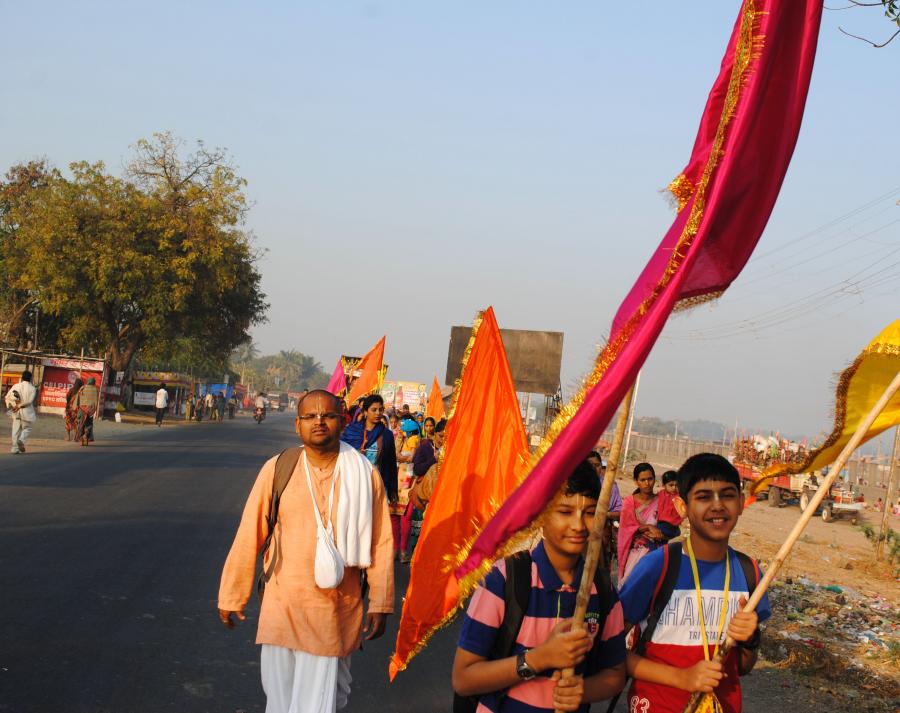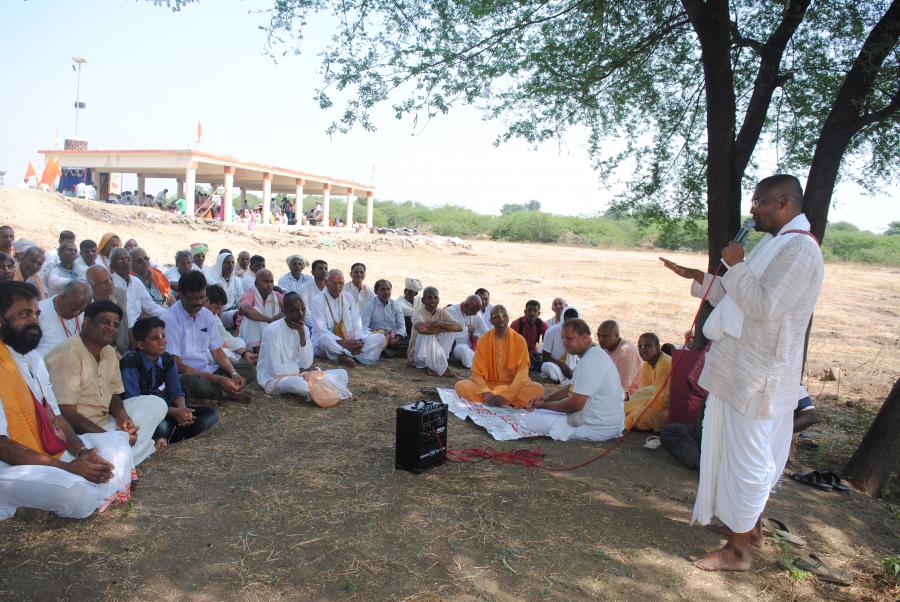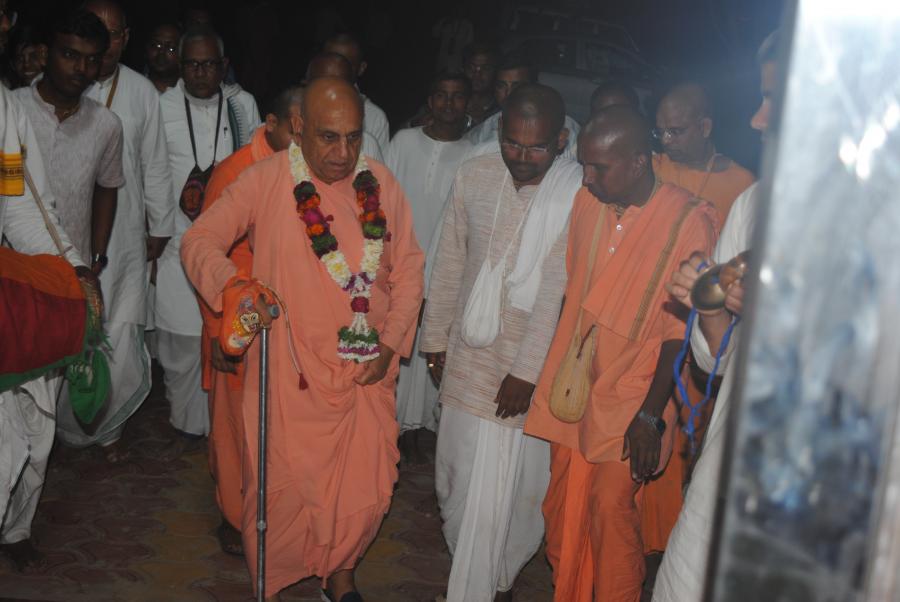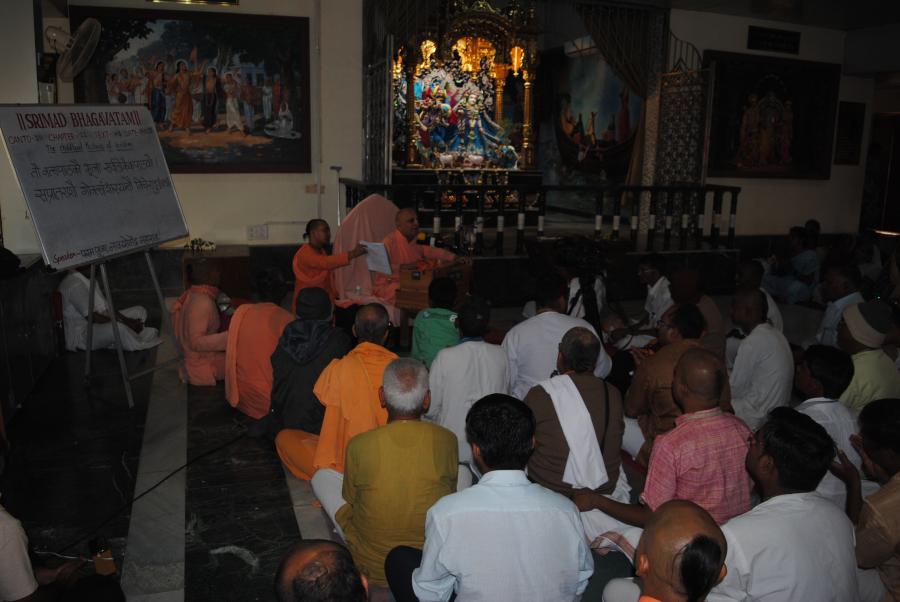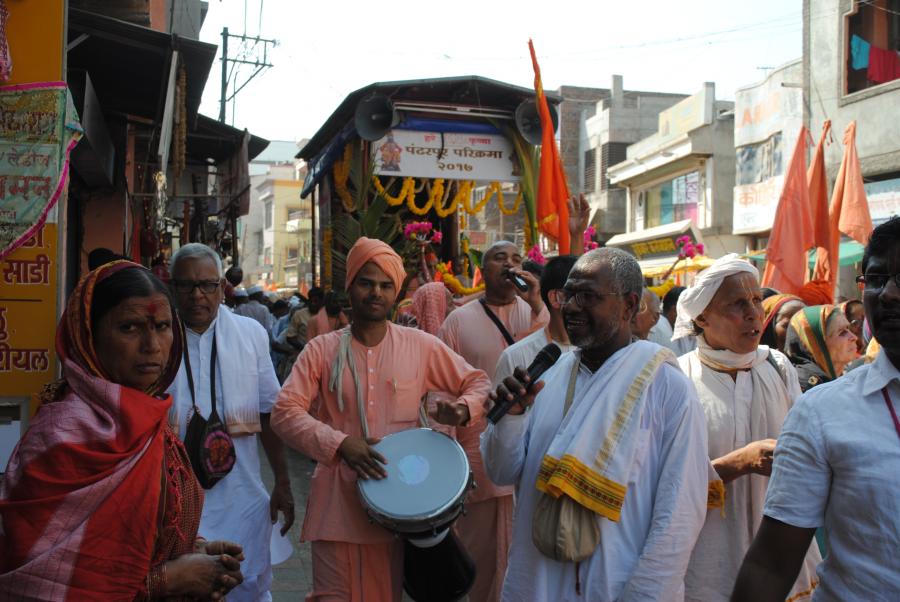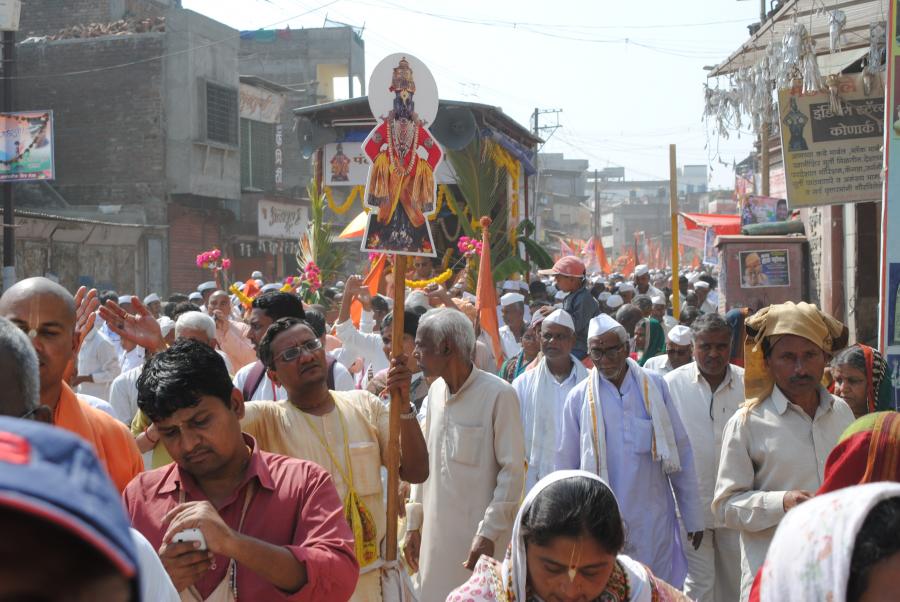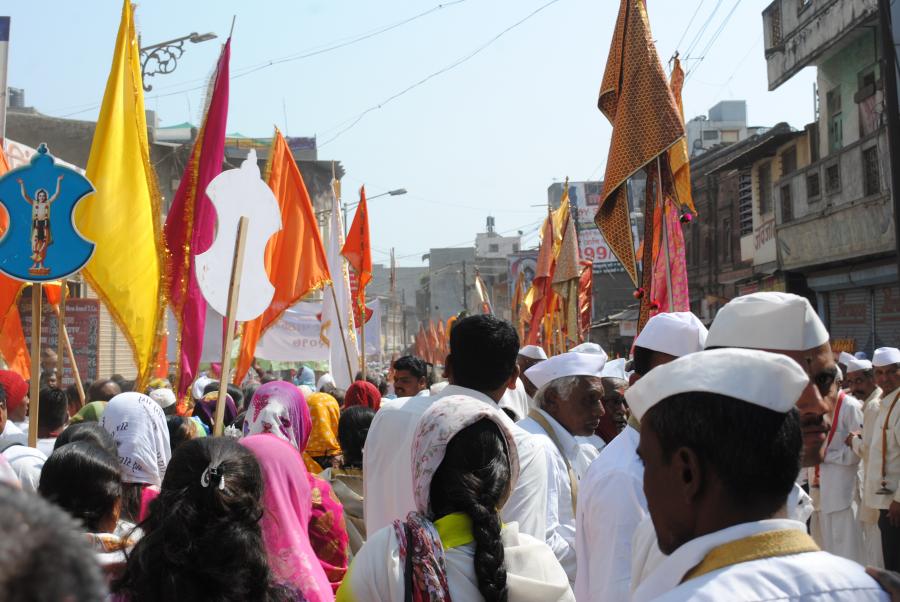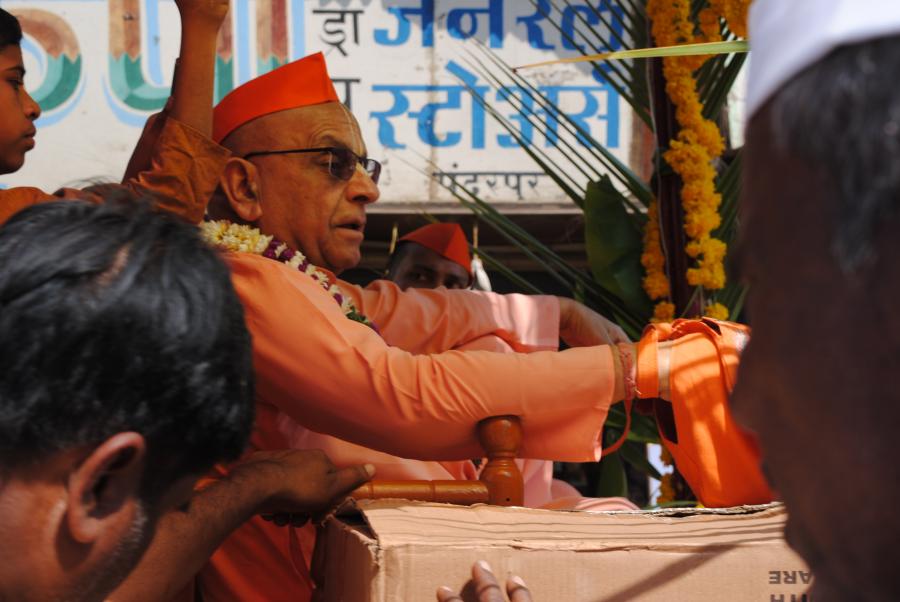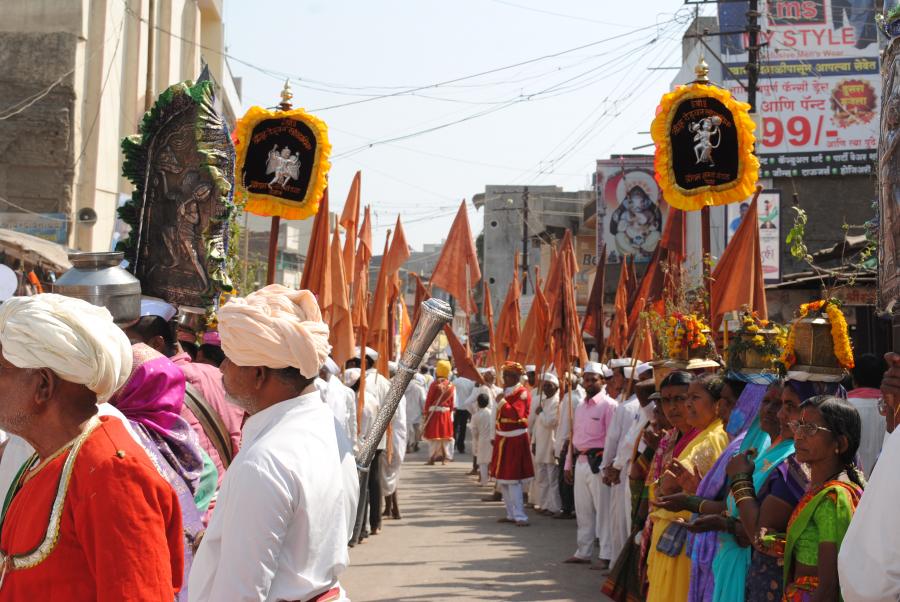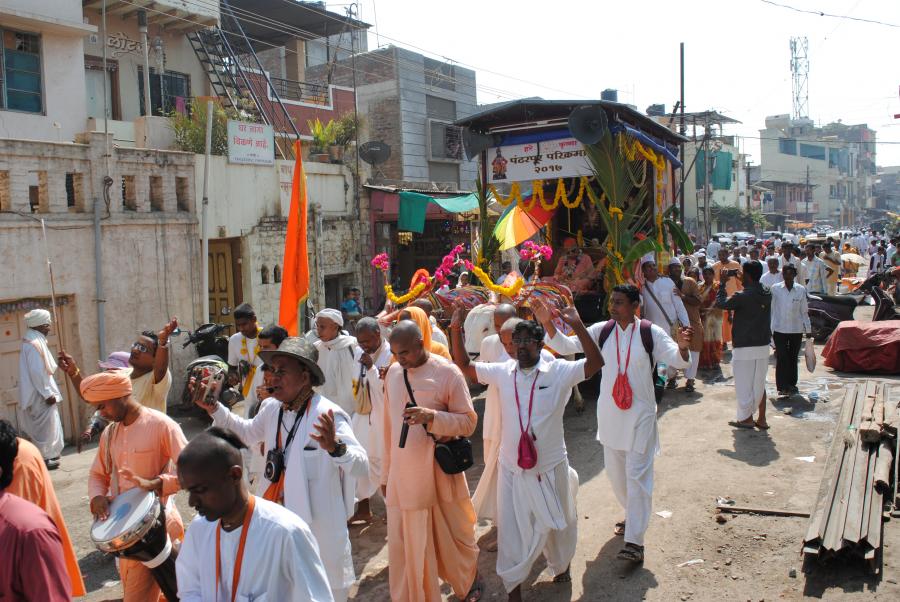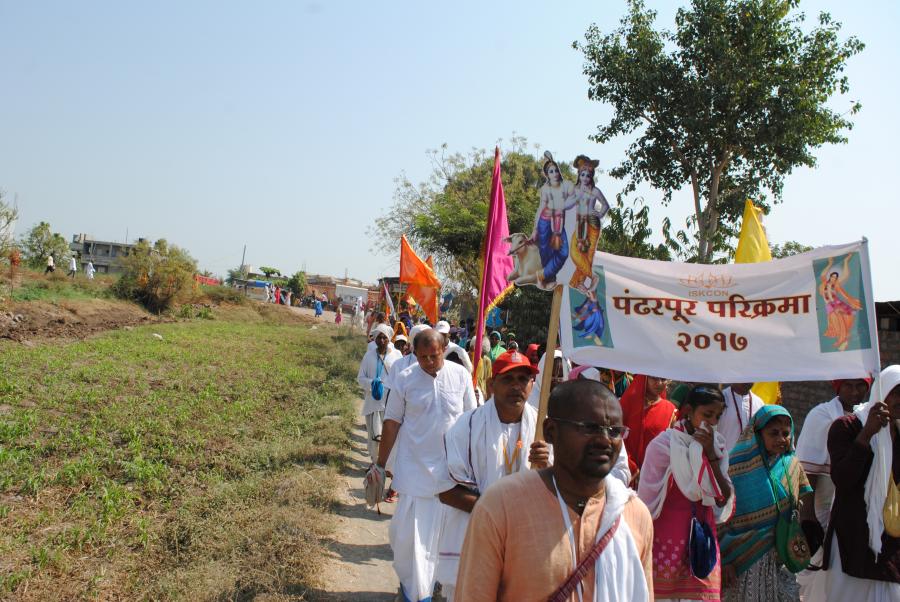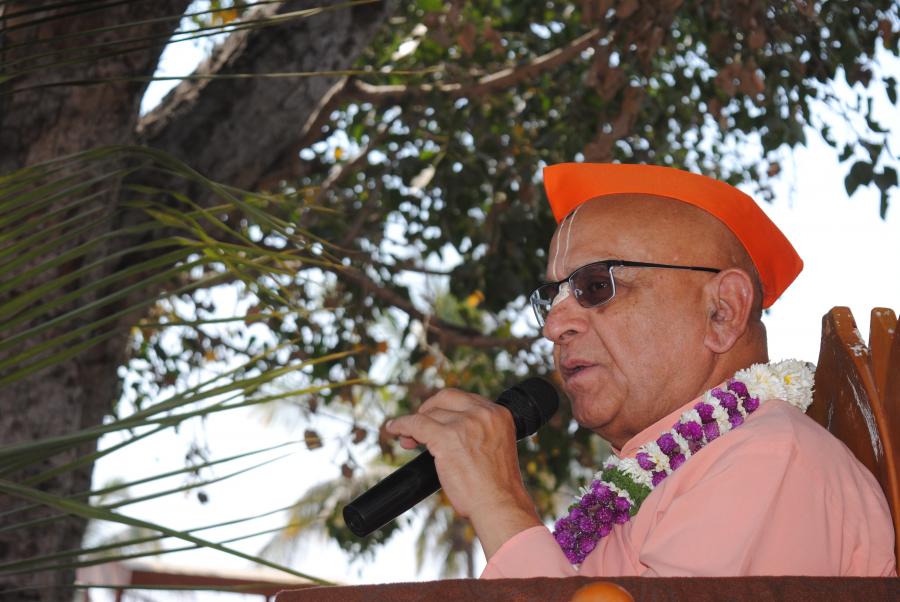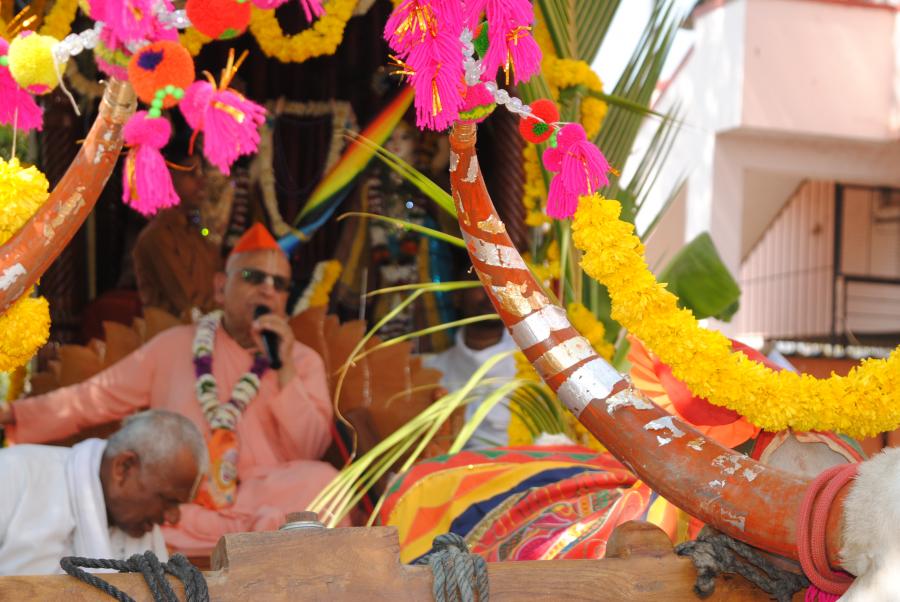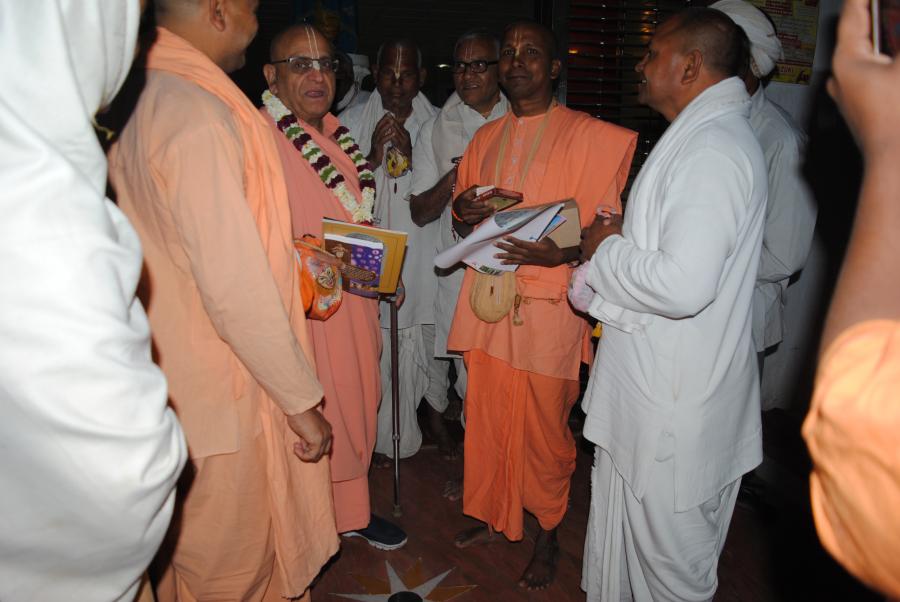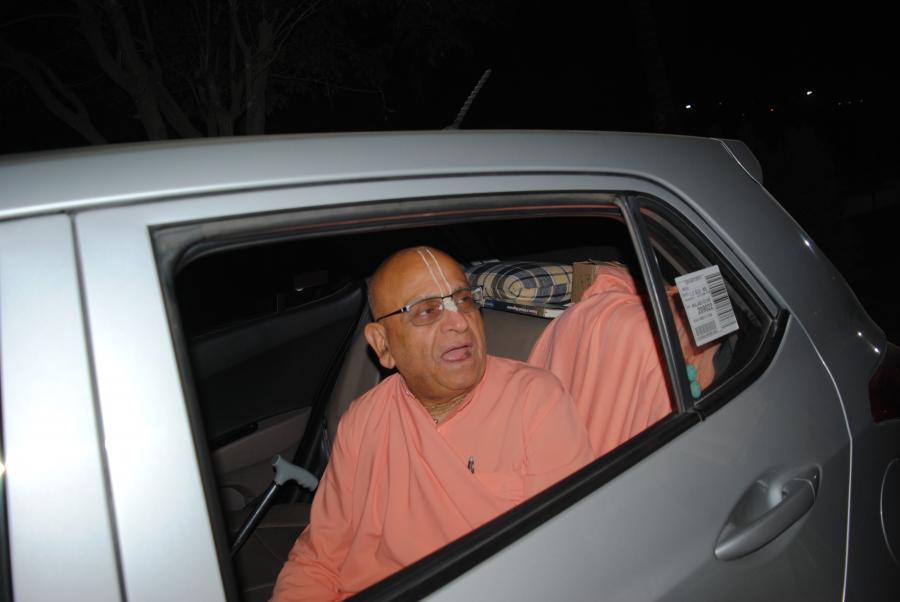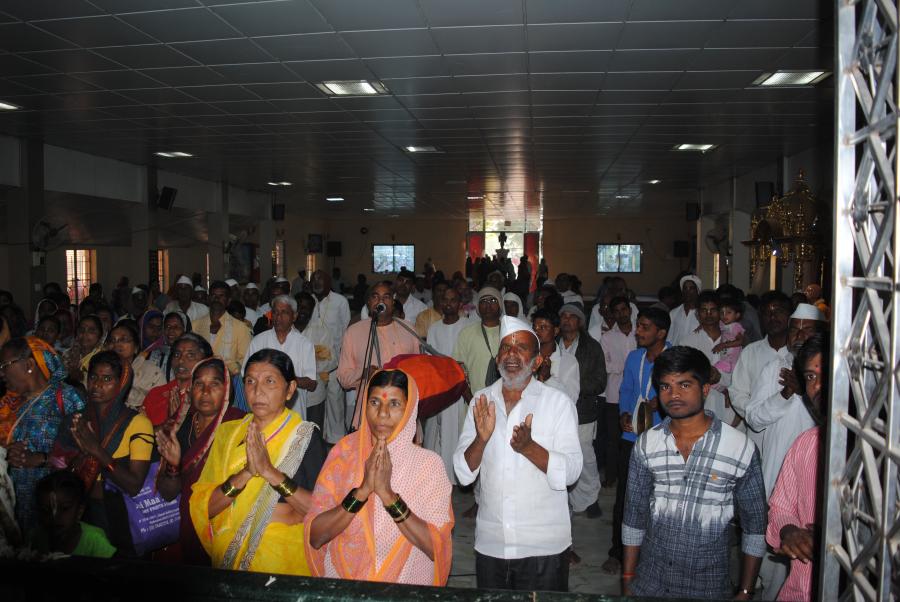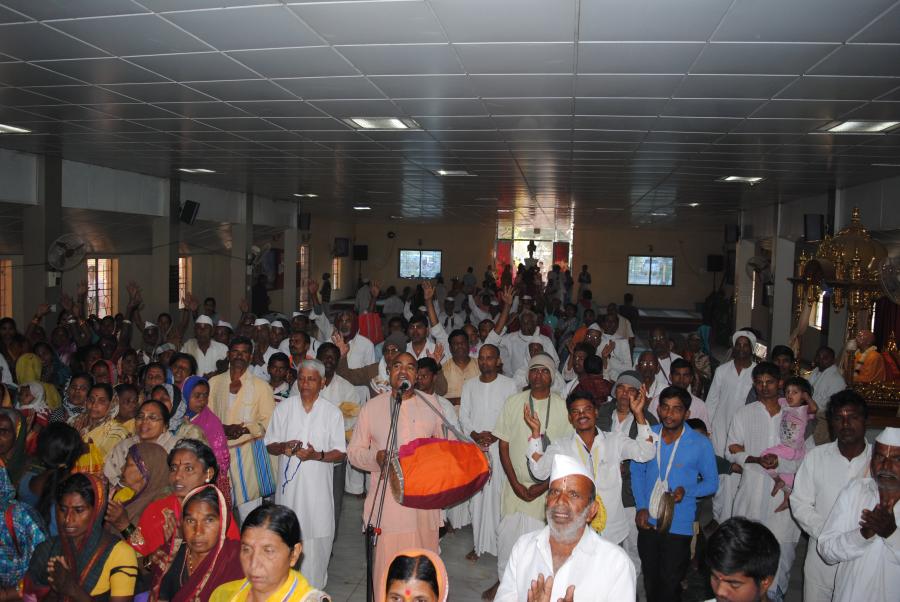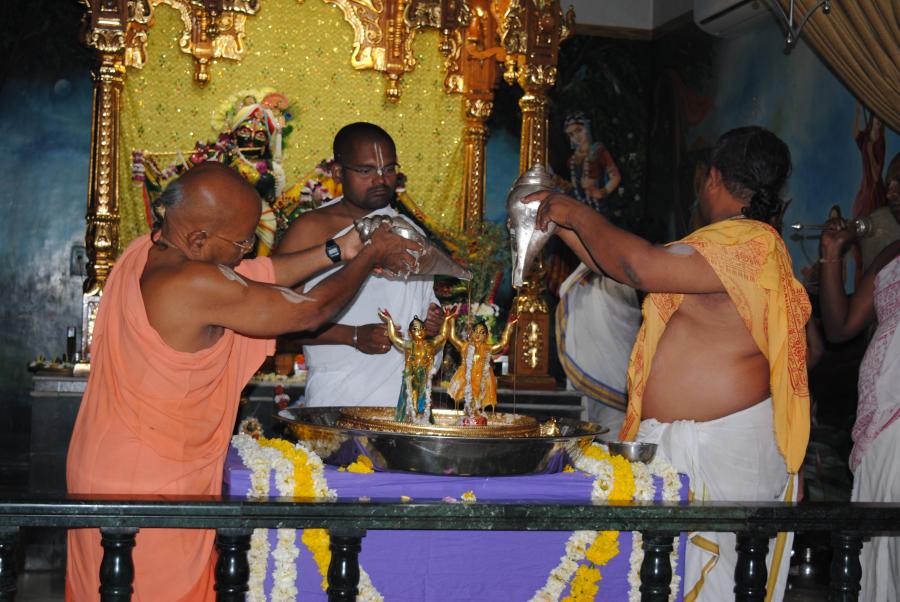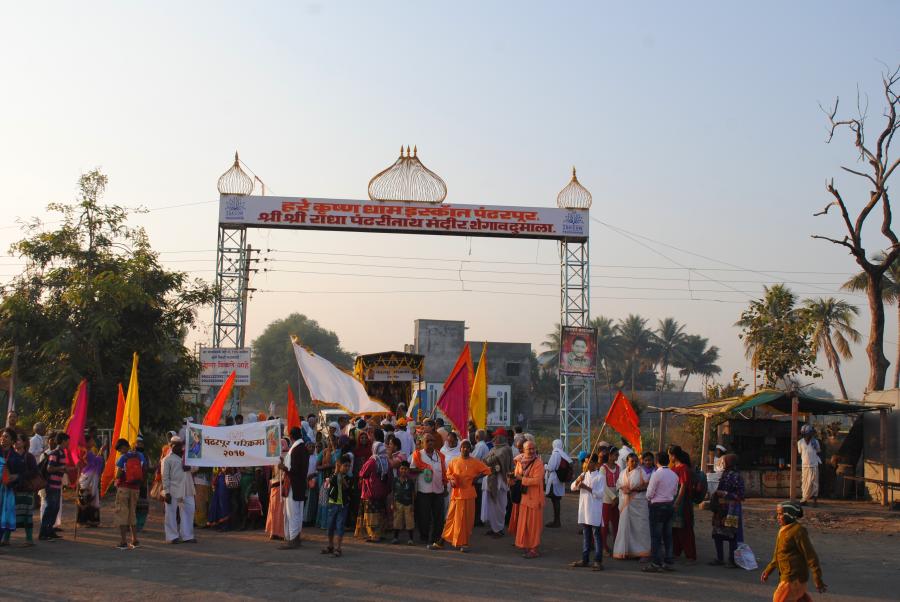By Braja Prema Dasa
Pandharpur the land of Lord Vitthala
Pandharpur Dhama is located in South-eastern Maharashtra and is known for the worship of Lord Vitthala. The town is situated alongside the river Chandrabhaga which means ‘half-moon’ describing the shape of the river as it curves around the town. The great saint Tukaram spoke of the glories of this river:
“O Lord! just give me one benediction, that I may always be able to bathe in the holy river Chandrabhaga.”
The sacred river is like a dear older sister to all the pilgrims, lifting them up so they can take darsana (audience) of the Lord. It is important, therefore to take blessings of the river Chandrabhaga before taking darsana of Lord Vitthal. Pandharpur hosts four annual pilgrimages, the month of Kartik attracts the largest number of people. The Pandharpur temple itself covers a large area and has six gates.
Parikrama
This was the fourth annual parikrama (walking event) organized by ISKCON Pandharpur , with 250 participants from all over India and abroad. Many of them came from big cities such as Delhi, Mumbai, Gaziabad, Pune, Muscat, Dubai, and also from Brazil. Our parikrama party was fortunate to have the presence of Navayogendra Maharaj, who gave various lectures during the walk. Other senior devotees who attended included Dharmaraja Dasa, Krishna Caitanya Dasa, Prahlada Dasa and Vitthalananda Dasa. The four-day parikrama started on February 4th and the daily schedule included mangal arati (morning worship) from 4:30 to 5:30 am after which we would begin walking and would have breakfast at 9:00 am. After breakfast we walked to the next holy site, take darsana, have lunch, rest and end the day with a lecture.
Day 1, February 4th (Bhismashtami)
The first day of padayatra was Bhishmashtami (the anniversary of Bhismadeva leaving his body).Our parikrama party gathered at Pandharpur ISKCON temple for mangal arati and Tulsi puja (worship). We left the temple at 5:30 am and reached the ‘Surya Narayan’ temple in Degaon at 9:00 am. We took darsan, listened to katha (spiritual talks) given by Dharmaraj Dasa and Prahlada Dasa and had breakfast before setting off to Sandyavali. After a few hours of walking and performing kirtana (congregation chanting of Holy Names) we reached our destination at 1:00 pm. Here we took darsana, listened to katha, had lunch and rested until 4:00 pm. There was an evening program from 4:00 pm to 6:00 where Rasikshehkar Dasa led everyone in kirtana, followed by arati, a lecture and a drama performed by the devotees. We spent the night at the Sandyavali school where the school’s management was kind enough to empty out the classrooms and allow us to sleep there. The villagers of Sandyavali also took great care of us by providing us with prasadam (sanctified foods), drinking water and anything else we needed.
Day 2, February 5th (Navami)
The second day was Navami[1]. We performed mangal arati and Tulsi puja in Sandyvali before starting the parikrama at 6:00 am. At 9:00 am we reached Vishnupad and Gopalpur where we took darsana, had katha and prasadam. After resting till 4 pm we made our way to Padmatirth where we listened to a lecture. We ended the day at the ‘Narayana Math’ temple where the management provided us with 20 rooms, prasadam, the use of their hall and kitchen absolutely free of charge. In the evening we held a program consisting of a drama, lecture, and kirtana.
Day 3, February 6th (Dashami, Saint Tukaram’s Diksha)
On this day we celebrated dashami the day Saint Tukaram was initiated by Lord Caitanya in a dream. After our usual morning program we arrived at the Durgadevi temple (Esbhavi). We had lecture and breakfast here before leaving to Panchganga where we bathed in the river Chandrabhaga and had more talks and lunch before setting off again. We ended the parikrama at 5:00 pm that day at ISKCON Pandharpur. Navayogendra Maharaj spoke to everyone and encouraged them to continue doing parikramas.
Day 4, February 7th (Ekadashi, Magh Waari)
It was Jaya Ekadasi and the last day of parikrama. This Ekadasi is particularly revered in Pandharpur, and thousands of devotees go there to observe it. Our party attended the morning program at the temple where Navyogendra Maharaj gave a nice class, and he joined us for this parikrama also known as ‘Nagar Pradakshina’. There were thousands of dindis (kirtana groups from other Vaisnava schools, the majority being from the Varkari sampradaya). Maharaj was very happy to see all these devotees, in fact, we were all very happy to hear kirtana everywhere and to see everyone dancing. We then went to take darsana of Lord Vitthala. Navayogendra Maharaj was very moved by seeing the Lord, and he spent some time with the pujaris (priests) and chanting japa inside the temple. After this we took bath in the Chandrabhaga river and attended the evening program at the Pandharpur temple at 5:00 pm where we watched a drama, dance and listened to a class.
Parikrama Highlights
Daily, we walked an average of 15 kilometres with 250 devotees from the ages of 14 to 65. Everyone was provided with free medical assistance if required by the Bhaktivedanta Hospital, and thankfully there were no injuries among our blissful group of devotees. One of the highlights of the parikrama was definitely having Navayogendra Maharaj participate. His lectures and kirtana during the walk were very much appreciated by everyone. It was also wonderful to receive warm welcomes from the locals wherever we went and to do programs in their villages. ISKCON Pandharpur also made many good arrangements for us such as accommodation and hot water for bathing. They also made facility for those devotees who could not walk very far, so they were able to participate as much as possible.
The president of the ISKCON Pune temple, Radheshyam Dasa sent a team of senior brahmacaris along with us. The devotees: Prahlada Dasa, Vitthalananda Dasa, Dharmaraj Dasa, Chakradhar Dasa and Mohanrupa Dasa lead ecstatic kirtanas and gave amazing lectures.
Ananta koti Vaishnava vrnda ki Jaya!.
[1] The ninth day (tithi) of the fortnight (paksha) in the Hindu lunar calendar

